What's New
Displaying results 4381 - 4390 of 4914
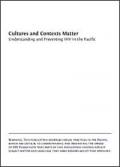
Resource | Publications,
The HIV epidemiological situation varies greatly within and between Pacific Island countries and territories (PICT), with epidemics increasing in different places at different speeds and with different intensities. By the end of 2004, many countries were identified as low prevalence epidemics reporting less than 10 HIV infections (e.g., American Samoa, Cook Islands, Nauru, Solomon Islands, Tuvalu, Vanuatu, and Wallis and Futuna). While statistics of person living with HIV (PLWH) might appear small in many countries, these can reflect high rates of infection because of their tiny populations—and the potential impact can be great. As Jenkins (2005) explains, “the distribution of recorded infections might be viewed in different ways. The ‘cumulative incidence per 100,000’ is a good indicator of the potential impact of HIV on the local population. Even small numbers of cases in small populations (e.g., Tuvalu), particularly if found among young working men, can have a devastating impact at the local level.” Only nine people in Tuvalu have been diagnosed with HIV. However, with a population of only 9,600, the rate of infection in Tuvalu is close to that of French Polynesia and Guam, which have some of the highest numbers of HIV infections in the Pacific outside of PNG.
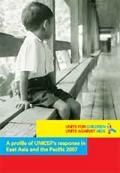
Resource | Publications,
This campaign could not have come at a more opportune time in East Asia and the Pacific. While HIV
prevalence in the region remains relatively low, the virus poses a serious threat. East Asia’s massive population coupled with rapidly changing social and economic dynamics could escalate epidemics, and in turn, jeopardize the tremendous development gains that have greatly benefited millions of children in the region. The threat is of a different nature in the Pacific, where HIV could devastate sparse populations and undermine whole cultures and societies.
This 2007 report is updated from an earlier version released in October 2006. Our aim is to provide the latest information of collaborative actions between UNICEF and governments, civil society, the United Nations system and international partners in East Asia and the Pacific region. It is an account of progress, from the purview of UNICEF around the Four Ps of primary prevention, preventing mother-to-child transmission (PMTCT), paediatric AIDS treatment and the protection and care of children affected by AIDS.

Resource | Publications,
Hong Kong, located in Asia the new burning place of HIV infection, is still having a relatively low prevalence of HIV infection. While sexual transmission is the predominant route of transmission in Hong Kong, an upsurge of infection in injecting drug users is a concern from the experience in other Asian localities. Various public health measures in Hong Kong have kept the HIV prevalence of drug users at low level, as compared with neighbouring cities.

Resource | Publications,
The Asian Development Bank (ADB) is supporting a human immunodeficiency virus (HIV) and sexually transmitted infection (STI) prevention program, which is being implemented in conjunction with the Western Yunnan Roads Development Project (Baolong Highway) in the People’s Republic of China (PRC).
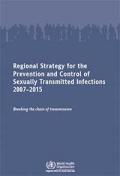
Resource | Publications,
Worldwide, nearly one million curable sexually transmitted infections (STIs) occur each day, half of them in Asia. Where they are common, STIs are among the major causes of serious preventable conditions such as infertility, ectopic pregnancy, cancer and congenital infections. Millions more incurable STIs add to the heavy burden of morbidity and mortality for women, men and children. Globally, unsafe sex ranks third among the morbidity risk factors, accounting for over 5% of attributable disease burden, and fifth for attributable mortality. For these reasons, interventions to prevent and control STIs are among the most cost-effective public health measures, which moreover contribute to achieving several Millennium Development Goals (MDGs).
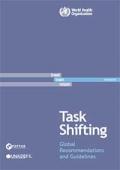
Resource | Guidelines,
The global recommendations and guidelines on task shifting propose the adoption or expansion of a task shifting approach as one method of strengthening and expanding the health workforce to rapidly increase access to HIV and other health services. Task shifting involves the rational redistribution of tasks among health workforce teams. Specific tasks are moved, where appropriate, from highly qualified health workers to health workers with shorter training and fewer qualifications in order to make more efficient use of the available human resources for health.
The recommendations and guidelines on task shifting have been developed in the context of efforts to rapidly increase access to HIV services in order to progress as far as possible towards the goal of universal access to HIV services by 2010. However, the impact of task shifting would not be restricted to HIV service delivery. The implications for other essential health services, and the potential for wider health systems strengthening, are recognized throughout.

Resource | Publications,
Interviews and focus group discussions with older women carers in three countries – Cambodia, Thailand and Vietnam - indicate that they assume multiple responsibilities in caring for people living with HIV and/or orphaned and vulnerable children. Looking after an adult child can involve a range of tasks, from obtaining food, water and medicine to assisting them to eat, bath, and dress. Caring for both affected and infected grandchildren requires them to take on important duties in areas such as health, nutrition, and education. In both cases, older women are key providers of emotional support.
The consequences of serving as the main carer in these circumstances are often severe, interconnected, and enduring. Their economic status can be weakened due to direct costs (medical, food, clothing, education) and indirect costs (loss of income support, lack of time to earn money), leading them to sell assets and borrow money.
Despite their evident burden, older women carers remain neglected within the response to HIV and AIDS in Cambodia, Thailand and Vietnam. Numerous commitments relating to older carers have been made at international level, but national policies guiding the response contain few, if any, specific references to them.

Resource | Publications,
In India, 38.4 percent of the estimated 5.1 million HIV infections are among women (UNAIDS/WHO 2006). Although mother-to-child transmission (MTCT) accounts for a little less than 4 percent of all HIV infections in India, in sheer numbers it is the cause of approximately 56,700 children infected with HIV each year (IAP/NACO 2006, UNICEF 2006). With support from UNICEF, India’s national program for prevention of parent-to-child transmission (PPTCT) of HIV has been underway since 2002. More recently, the government launched a national treatment program that offers antiretroviral therapy (ART) to HIV-positive women, children below 15 years of age, and men. However, since the start-up of the ART program there have been concerns about access to and utilization of these services by women and children. To address these concerns, a comprehensive PPTCT initiative that emphasizes treatment for HIV-positive women and their children was launched in 2004 by the National AIDS Control Organization (NACO) using funds from the Global Fund to Fight AIDS, Tuberculosis, and Malaria. To better implement this initiative, it is imperative to understand the prevention and care needs of the women who are receiving or have received PPTCT services, referral systems between PPTCT programs and other HIV-related and reproductive health services, and linkages between PPTCT programs and community-based organizations and NGOs.
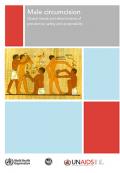
Resource | Publications,
Male circumcision is one of the oldest and most common surgical procedures worldwide, and is undertaken for many reasons: religious, cultural, social and medical. There is conclusive evidence from observational data and three randomized controlled trials that circumcised men have a significantly lower risk of becoming infected with the human immunodeficiency virus (HIV). Demand for safe, affordable male circumcision is expected to increase rapidly, and country-level decision-makers need information about the sociocultural and medical determinants of circumcision, as well as risks of the procedure, in the context of comprehensive HIV prevention programming.
The aim of this report is to review the determinants, prevalence, safety and acceptability of male circumcision, focusing on sub-Saharan Africa.






